Support Village Voice News With a Donation of Your Choice.
This, the fourth article in this series, will delve into the cycle of poverty itself, and some practical ways to escape from it.
Parts 1 and 2 of this series examined the nature, definition, effects, and causes of poverty. Part 3 explored the psychological component of being a victim of poverty, that is, the poverty mindset.
The attentive reader would have noticed that no definition of “The cycle of poverty” has been articulated, even though that is the name of this article-series. There is a good reason for that. This publication is of the view that this subject is an extremely complex one, having numerous interrelated components that are spread across many areas of study, including economics, sociology, psychology, and politics. As such, some important components of the issue had to be explored first before an integrated examination could be attempted.
And, we finally come to the heart of the matter.
What is the cycle of poverty?
The cycle of poverty begins when a child is born into a poor family. That family – by definition – does not have the ability to get out of the situation. The family may lack the economic resources, social support, or psychological makeup to escape poverty. The child, born into this environment, is at a disadvantage from birth.
The child may be born with poverty related health issues. The child will have fewer educational opportunities, and, therefore, he or she is likely to become a poorly educated adult with an inherited poverty mindset. That new adult will probably have limited earning ability owing to a lack of literacy and numeracy skills. As a result the poverty cycle is perpetuated into the next generation, as the new adult remains poor throughout life.
Officially, experts say that a poverty cycle exists when three generations or more experience persistent, lifelong conditions of poverty.
What is a key to escaping from the cycle?
Experts say that considering how the cycle of poverty is perpetuated by a child from one generation to the next, the key to breaking the cycle is intervention at the childhood level.
Such intervention would necessarily involve giving the child educational opportunities. At the same time, poverty related health problems such as malnutrition and cognitive deficits should be addressed. Additionally, by targeting the child, one can interrupt the entrenchment of a poverty mindset.
Incidentally, the following should be noted:
According to statistics from the United Nations (UN), at the end of 2022, some 258 million children worldwide were not attending school at all. That is, they were not receiving any education of any kind. The UN notes that many of those children were suffering that condition because of the COVID-19 pandemic. Additionally, one should note that most of those children were already poor and had no internet access, and no way to be taught remotely.
The UN reports, too, that because of the pandemic, an entire generation may have been “lost to a life of poverty” across many territories, particularly in developing countries.
The UN reports – which were based on various expert studies – note that levels of education are inextricably interlinked with poverty statistics.
According to one report, the link between education and poverty is so pronounced, that some 60 million children worldwide become impoverished adults every year, because they left high school only 2 years before completion.
Who must intervene?
Since poor families lack the means to intervene for themselves to end the cycle of poverty, it follows that other agencies must become involved.
Governments are the obvious agencies of intervention. However, one needs to ask if a government is able to do it. In some parts of the world, governments may be preoccupied with other matters such as internal or external conflicts.
Fortunately, Guyana is currently free from armed conflict. But there may be other factors.
In recent times, Guyana’s ruling People’s Progressive Party (PPP) administration has been accused of racial and political discrimination. While the PPP government has denied the allegations, the number and variety of sources of such accusations make such charges impossible to simply dismiss.
According to multiple sources, the PPP has a policy of discrimination. If this is true, one may ask the following question: Would the ruling PPP government be inclined to deliberately deprive some sections of the population of educational opportunities?
Aside from deliberate deprivation, how likely is a discriminatory government to neglect some communities?
Officials of the PPP government of Guyana have also been accused of corruption. In this case, one may wonder how much attention would corrupt officials give to poor families if such officials are spending their days busily filling their own pockets?
Another source of intervention may be faith-based organisations such as churches. However, one wonders if such organisations would be willing to help poor families that do not subscribe to their particular religious faith. This concern may be most applicable to hinterland residents who may not subscribe to any of Guyana’s major religious faiths, while being among Guyana’s poorest citizens.
Conclusion.
At this point the complexity of this problem should be evident. It should be obvious, too, that escape from the cycle of poverty must necessarily involve agencies outside of the family, as well as members inside the family.
The next article in this series will focus on additional specific actions aimed at ending the cycle of poverty with emphasis on children.


















